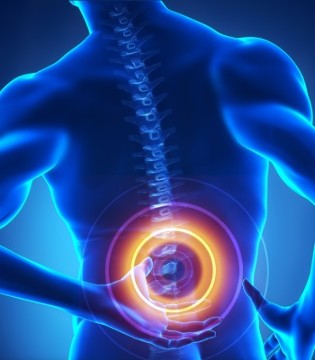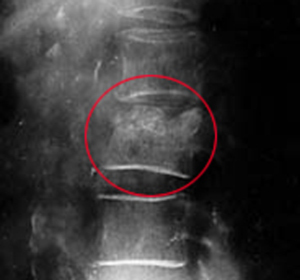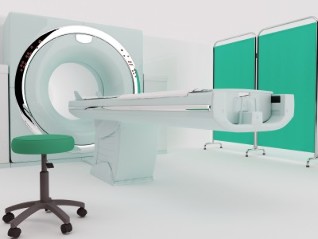
The back pain in English sources call it the pain in the lower back (low back pain). The pain is often conducive to the tension in the lumbar spine, restriction of movement and antalgic scoliosis. Acute low back pain may last from a few days to a few weeks.
The causes, incidence and risk factors of the onset of pain in the lower back
The back pain occurs almost every person at least once in his life. It should be noted that the pain can be in any part of Your back, but, however, the pain in the lumbar region of the spine that occurs most often. This is due to the fact that on the lumbar vertebrae represents the maximum load the weight of Your body.
The back pain, it is the second on the number of requests to a physician immediately after a viral infection.
You may feel pain in the lower back after the lifting of gravity, the sudden movement, after having for a long time in the same position during or after a trauma of the spine.
The acute pain in the lumbar region of the spine is most often caused by a displacement of an intervertebral disc and trauma of the spine.
Causes of low back pain:
- Osteochondrosis of the lumbar spine
- Intervertebral hernia and disc protrusion
- Spondiloarthrosis
- Spondylosis
- Spondylolisthesis
- A compression fracture due to osteoporosis, myeloma disease, hemangioma vertebral
- The tumor in the lumen of the spinal canal
- Fracture of the spine after injury
- Prolonged muscle tension
- Anatomically narrow spinal canal
- The curvature of the spine (scoliosis, kyphosis, kyphoscoliosis, disease Chairman Mau)
- Aneurysm of the aorta
- Rheumatoid arthritis, psoriatic arthritis, osteoarthritis
- Infection of the spine - osteomyelitis, discitis, tuberculosis of the spine
- Pyelonephritis, urolithiasis
- Complicated during pregnancy
- Gynaecological diseases (endometriosis, ovarian cysts, ovarian cancer, etc)

The symptoms of low back pain (lbp)
The pain can be varied: intense, dull, pulling , tingling may be accompanied by tingling and ants, numbness.
The intensity of the low back pain can vary significantly from low to excruciating pain, which even make a little bit of movement. The pain can be combined with the pain in the hip, pain in leg, pain in the foot.
The diagnosis of low back pain
First of all, You need to consult a doctor-a neurologist. The doctor will ask You questions about the nature of Your pain, its frequency, and repetition. The doctor will try to determine the cause of the pain and begin treatment with simple means (ice, moderate pain relievers, physiotherapy and exercises needed).
In most cases, these treatments lead to a decrease of the pain in the back. During the examination, the doctor will determine the exact position of the pain, its radiation, neurological reflexes. Most people with pain in the lumbar region of the spine will recover in a period of 4-6 weeks.
The diagnosis involves an mri (engl. MRI) of the lumbar spine, the ct scan of the lumbosacral region of the spine, x-rays of the spine.
Because the most common cause of low back pain is Intervertebral hernia of the lumbosacral region of the spine, the first thing You need to do an MRI of the lumbar spine. This study also allows to eliminate most of the causes of pain, such as swelling in the lumen of the spinal canal, tuberculosis of the spine, spinal fracture, multiple myeloma disease, anatomically narrow spinal canal, spondylolisthesis, a variety of the shape of the curvature of the spine, osteoarthritis, and spondiloarthrosis. If Your neurologist has not granted You an MRI, do-it-yourself. The ability of the MRI machine must be of 1 Tesla and more.

Not worth it to start the diagnostic x-ray and ct scan, these methods are not safe. You can do it in the first place only in cases of suspected fracture of the spine.
Here are a few tips on things to do to pain in the back:
- Reduce physical activity in the first two days after the beginning of the crisis. This will help to reduce the symptoms of the disease, and swelling in the area of pain.
- Do not sit with a forward tilt until completely the pain is not subsided.
- Take painkillers only in case of intolerable pain. Better to do a intramuscular injection, to drink a pain medication. This will help protect the lining of Your stomach from direct contact with an anti-inflammatory agent. Try to avoid the excesses of the receipt of medicines. Do not use for hormonal treatment, if the back pain is not associated with an autoimmune disease.
- Sleep in a fetal position, place a pillow between the legs. If You have the habit of sleeping on your back, place a pillow under the knees
- An idea is an idea of what You should limit physical activity over the long term. Bed rest is not recommended!!! If You do not have to increase the temperature, the weight loss involuntary urination and defecation, then You need to stay active as much as you can resist. You can reduce his activity in the first two days after the onset of the pain. Start to do light aerobic exercises. Walking on the simulator, swimming will help to improve the circulation of blood to the muscles of Your back. Talk to your doctor for the selection of the exercise so as not to cause an amplification of the pain.
Forecasts:
Most people feel much better after the first week of treatment. 4 to 6 weeks in a large fraction of patients, the pain disappears completely.

In which case you should contact your doctor immediately:
- The back pain is combined with pain in the leg and pain in the foot
- The pain does not, alone, serve
- The pain is combined with incontinence of urine and feces
- The combination of the pain in the lower back with numbness in the buttock, the thigh, the leg, the foot, the groin area
- If You have already had pain in the back before
- If the pain lasts more than 3 days
- If You are taking hormones
- If the low back pain began after an injury
- Previously, has been diagnosed with cancer
- If You have lost weight recently, for unknown reasons





































